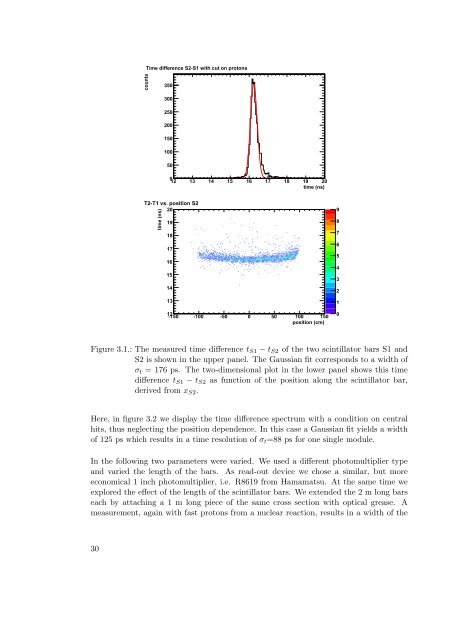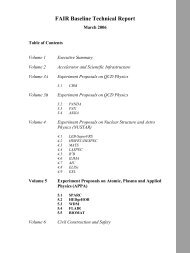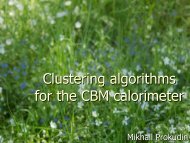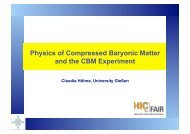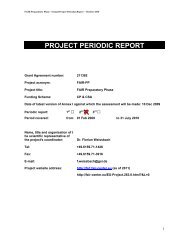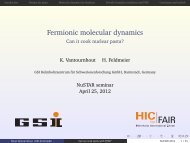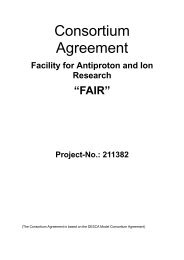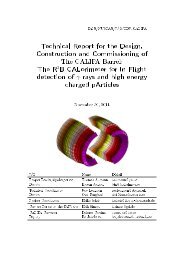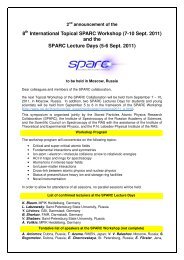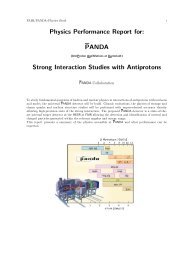NeuLAND - FAIR
NeuLAND - FAIR
NeuLAND - FAIR
You also want an ePaper? Increase the reach of your titles
YUMPU automatically turns print PDFs into web optimized ePapers that Google loves.
counts<br />
Time difference S2-S1 with cut on protons<br />
time (ns)<br />
350<br />
300<br />
250<br />
200<br />
150<br />
100<br />
50<br />
0<br />
12 13 14 15 16 17 18 19 20<br />
time (ns)<br />
T2-T1 vs. position S2<br />
20<br />
19<br />
18<br />
17<br />
16<br />
15<br />
14<br />
13<br />
12<br />
-150 -100 -50 0 50 100 150<br />
position (cm)<br />
Figure 3.1.: The measured time difference tS1 − tS2 of the two scintillator bars S1 and<br />
S2 is shown in the upper panel. The Gaussian fit corresponds to a width of<br />
σt = 176 ps. The two-dimensional plot in the lower panel shows this time<br />
difference tS1 − tS2 as function of the position along the scintillator bar,<br />
derived from xS2.<br />
Here, in figure 3.2 we display the time difference spectrum with a condition on central<br />
hits, thus neglecting the position dependence. In this case a Gaussian fit yields a width<br />
of 125 ps which results in a time resolution of σt=88 ps for one single module.<br />
In the following two parameters were varied. We used a different photomultiplier type<br />
and varied the length of the bars. As read-out device we chose a similar, but more<br />
economical 1 inch photomultiplier, i.e. R8619 from Hamamatsu. At the same time we<br />
explored the effect of the length of the scintillator bars. We extended the 2 m long bars<br />
each by attaching a 1 m long piece of the same cross section with optical grease. A<br />
measurement, again with fast protons from a nuclear reaction, results in a width of the<br />
30<br />
9<br />
8<br />
7<br />
6<br />
5<br />
4<br />
3<br />
2<br />
1<br />
0


